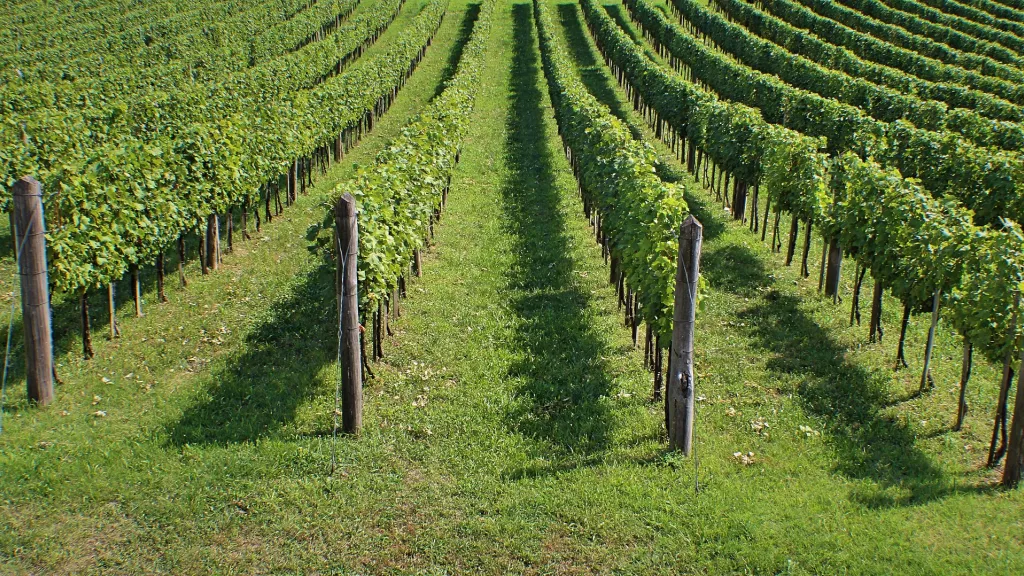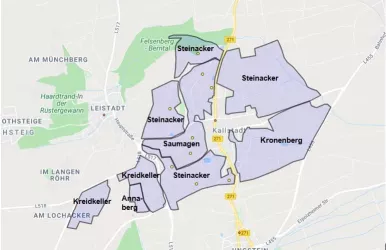Kreidkeller, Annaberg, Saumagen, Kronenberg, Steinacker & Kobnert
Kreidkeller
The name refers to the chalky soil of the vineyard, which was formed around 25 million years ago. A historical document from 1583 presumably refers to the soil quality of the parcel: crumbly soil. In 1784, the parcel was called "Kreedkeller", which is also an indication of lime deposits and lime mining.
Soil type: loamy sandy soil, with sandstone debris, in places slope debris soil (red sandstone).
Annaberg
A brickworks belonging to the Counts of Leiningen in Borntal was first mentioned in 1545. The brickworks, destroyed in the Thirty Years' War, was rebuilt in 1683. From 1790, the tenant at the time was allowed to serve wine at the brickworks, which he produced on "two acres of Wingertsfeld" (ancient for "vineyards"). In the 1870s, Louis Fitz acquired the estate, which he named after his wife Anna's first name. Later it became the name of the vineyard "Annaberg".
Soil type: loamy sandy soil, tertiary limestone weathered soil, loams, strongly varying
Saumagen
The Saumagen vineyard has existed since the 19th century. It is located on the western edge of the village and is considered the best vineyard in Kallstadt. The area covers just under 40 hectares, which corresponds to an area of about 66 football pitches. Approximately 300,000 bottles of wine can be bottled annually from the harvest.
Soil type: calcareous loamy soil (tertiary limestone), loess. Limestone weathered soil in places.
Kronenberg
The name of the vineyard reflects the former ownership. Interests of the Cronenberg/Cronenburg family, which died out in 1704, can be traced back to 1538 in the Kallstadt and Ungstein districts. The Kallstadt Kronenberg is located in the south-east of Kallstadt. The Knights of Kronenberg in the Taunus (near Frankfort) had possessions in this area. This is how they gave their name to this vineyard. In 1659, Kronenberg wine was drunk for the first time.
Soil type: loamy sandy soil, sandy loam mostly with limestone rubble, strongly variable
Steinacker
Wine from the Kallstadter Steinacker has been traded since 1270.
Soil type: loamy loam, limestone weathered soil, occasionally clayey soils, calcareous
Kobnert
The Kobnert is the largest vineyard in the area. Around 800 years ago, the vineyard appears in the tax records of the time as "Coppenhart".
Soil type: loam, loess, lime, clay, gravel, sand, loamy sand, sandy loam

